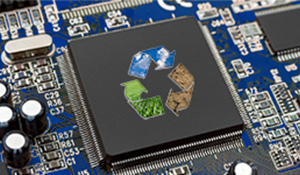Now that Brewer Science is leading the charge in improving directed self-assembly (DSA) technology, products such as semiconductors, computer hard drives, and drug therapies can benefit from new manufacturing methods that can make complex structures as small as 7 nanometers. The technology allows for higher product volumes and lower costs than in the past, all without requiring manufacturing equipment upgrades. What’s next for DSA technology across the world? We asked the opinion of Dr. Marya Lieberman, associate professor of chemistry at the University of Notre Dame. Lieberman’s research focuses on nanostructures made from DNA as self-assembling "circuit boards" for nanoelectronic and nanomagnetic devices.
Q: What are some possible uses for DSA in future applications?
A: The driver is lithographic patterning for complementary metal oxide semiconductor (CMOS)–compatible applications, although many researchers are interested in the patterning of nanoparticles for applications such as photonics. For CMOS, the main technology used is a sort of bootstrapping approach. First, relatively large patterns are made by conventional photolithography, then a block copolymer film is spread over the large pattern and annealed so the copolymer can phase segregate. If done carefully, the phases of the block copolymer film form ordered arrays of lines, dots, or other features aligned with respect to the initial photolithographic patterns, but the features are much smaller in size. Some DSA structures also help smooth out irregularities formed during photolithography.
Q: How might the DSA process advance or adapt in the future?
A: DSA requires consideration of the physical and chemical interactions between the substrate surface and the different polymer phases in the block copolymer. Researchers can control many factors — from the detailed chemical structures of the monomers and the lengths and branching of the copolymer components, to the surface topography and chemistry of the substrate. Many semiconductor manufacturers have research programs aimed at figuring out how to optimize that process and use it to make device structures. (Lieberman pointed to industry-sponsored report “International Technology Roadmap for Semiconductors” for details.)
Q: What are some limitations of DSA? What puzzles are still being solved?
A: Defects and accurate positioning of DSA features are the two main technical problems. A fundamental limitation of DSA is that it is much easier to create homogeneous structures, such as arrays of parallel lines or hexagonal arrays of dots, than the heterogeneous structures often used in functional circuitry. It may be possible to compensate through circuit design and control of the initial photolithographic template. A few researchers are working with large DNA nanostructures as resist or patterning aids for semiconductors (my group is one, along with Haitao Liu's at the University of Pittsburgh). The DNA structures have the potential for even higher spatial resolution than block copolymers and might be good templates for non-repetitive structures. However, they are chemically more delicate and their utility for semiconductor circuitry fabrication is even less clear than that of block copolymers.
Brewer Science continues its own research in improving DSA technology. Check out our products or contact us today to find out more.




Subscribe to Our Blog